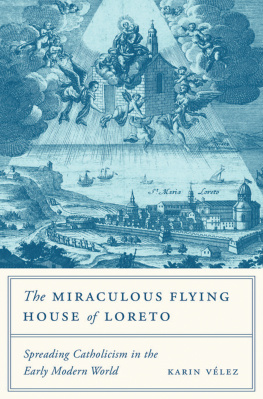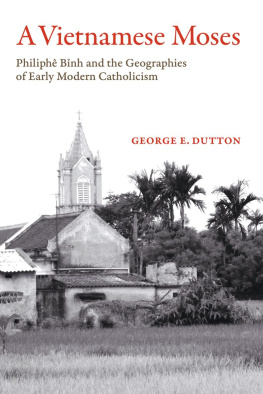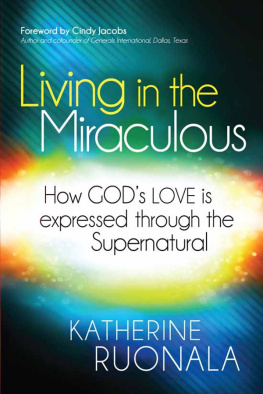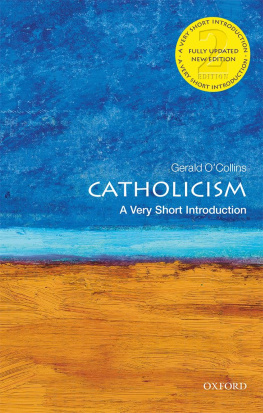Vélez - The miraculous flying house of Loreto: spreading Catholicism in the early modern world
Here you can read online Vélez - The miraculous flying house of Loreto: spreading Catholicism in the early modern world full text of the book (entire story) in english for free. Download pdf and epub, get meaning, cover and reviews about this ebook. year: 2018, publisher: Princeton University Press, genre: Religion. Description of the work, (preface) as well as reviews are available. Best literature library LitArk.com created for fans of good reading and offers a wide selection of genres:
Romance novel
Science fiction
Adventure
Detective
Science
History
Home and family
Prose
Art
Politics
Computer
Non-fiction
Religion
Business
Children
Humor
Choose a favorite category and find really read worthwhile books. Enjoy immersion in the world of imagination, feel the emotions of the characters or learn something new for yourself, make an fascinating discovery.
The miraculous flying house of Loreto: spreading Catholicism in the early modern world: summary, description and annotation
We offer to read an annotation, description, summary or preface (depends on what the author of the book "The miraculous flying house of Loreto: spreading Catholicism in the early modern world" wrote himself). If you haven't found the necessary information about the book — write in the comments, we will try to find it.
Vélez: author's other books
Who wrote The miraculous flying house of Loreto: spreading Catholicism in the early modern world? Find out the surname, the name of the author of the book and a list of all author's works by series.
The miraculous flying house of Loreto: spreading Catholicism in the early modern world — read online for free the complete book (whole text) full work
Below is the text of the book, divided by pages. System saving the place of the last page read, allows you to conveniently read the book "The miraculous flying house of Loreto: spreading Catholicism in the early modern world" online for free, without having to search again every time where you left off. Put a bookmark, and you can go to the page where you finished reading at any time.
Font size:
Interval:
Bookmark:

THE MIRACULOUS FLYING HOUSE OF LORETO
The Miraculous Flying House of Loreto
SPREADING CATHOLICISM IN THE EARLY MODERN WORLD

Karin Vlez
PRINCETON UNIVERSITY PRESS
PRINCETON & OXFORD
Copyright 2019 by Princeton University Press
Published by Princeton University Press
41 William Street, Princeton, New Jersey 08540
6 Oxford Street, Woodstock, Oxfordshire OX20 1TR
press.princeton.edu
All Rights Reserved
LCCN 2018940059
ISBN 09780691174006
British Library Cataloging-in-Publication Data is available
Editorial: Fred Appel and Thalia Leaf
Production Editorial: Debbie Tegarden
Jacket/Cover Design: Amanda Weiss
Jacket Credit: Engraving of the flying house of Loreto, from Bartoli, Historische Beschreibung des Heil. Hauses zu Loreto, 1725. Courtesy of SLUB Dresden / Digital Collections / 3.A. 6718
Production: Jacquie Poirier
Publicity: Tayler Lord
Copyeditor: Kathleen Kageff
This book has been composed in Miller
Printed on acid-free paper.
Printed in the United States of America
10 9 8 7 6 5 4 3 2 1
CONTENTS
LIST OF ILLUSTRATIONS & TABLES
Illustrations
. |
. |
. |
. |
. |
. |
. |
Table
ACKNOWLEDGMENTS
THERE IS A DANGER for writers overly immersed in decades-long endeavors to see their topics writ large in all current events. In autumn 2017, as I was finishing this manuscript, Hurricane Maria blasted through the Atlantic causing much death and destruction. Responding to the disaster in his familys home island of Puerto Rico, popular composer Lin-Manuel Miranda released a fundraising song he called Almost Like Praying. His chart-topping hit is based on Maria, a number from the 1957 Broadway musical West Side Story. I was drawn to Mirandas Maria remake because it reminded me of my own drawn-out encounter with the star of this book, Mary of Loreto.
On the surface, Mirandas new lyrics have little to do with Maria/Mary: he makes a love song out of the names of all seventy-eight towns in Puerto Rico. But the effect is more than simply gathering the many villages that contributed to his formation. Chanted together, the words assume the power of a living prayer: the names are intoned variously in appreciation, entreaty, and even awe. The names in the following acknowledgments have likewise functioned Almost Like Praying for me. As was the case for Miranda, Mary is what indirectly precipitated the occasion to summon and to publicly recognize these particular people and places. I group their names below to loosely parallel the roles featured in my book chapters, to honor the diverse ways in which they have contributed to this work whose completion is its own small miracle.
The First Authors of this project are my teachers, founts of wisdom but also models of the kind of scholar I hope to become. Though some of them are not listed in the copious notes of this book, their questions and approaches have been foundational to my thinking. Most recently these mentors have included Jeanne Kilde, Jaine Strauss, and Jim Laine. In graduate school, where this took its first shape as a doctoral dissertation, I was fortunate to benefit from the sharp insights of Anthony Grafton, Kenneth Mills, William Chester Jordan, and Robert Darnton. William B. Taylor and Simon Ditchfield have also been kind and interested readers providing inspiration from graduate school forward. Before that, in the murky prehistory of my intellectual formation, Shanti Singham and Harry Payne planted seeds of French rebellion that have found their way from their undergraduate classrooms onto these pages. Still earlier, I was boosted on the shoulders of my grandparents who posthumously remain giants in my life. Henry Agostini, Ana Lydia Espada, Reverend Samuel Jos Vlez, and Gladys Vega encouraged all my writing and schooling endeavors. Their brave choices, fighting spirits, steadfast faith, and ambition also inspired their shy, overly curious granddaughter to dream big.
I have been fortunate to share the road with Accidental Pilgrims who have accompanied me through rough stages of the journey, offering encouragement and purpose in distant places and often continuing to provide this support when our paths diverged. This project would not exist in its current form had I not crossed paths with Shen Liu, Susan Hoang, Sang Mi Pak, Christina Esposito, Alicia Muoz, Sushmita Hodges, Andrea Moerer, Aaron Bohr, S. J., and Lynn Hudson in Minnesota; Kimberly Juanita Brown and Ethan Hawkley in Boston; Danielle Kane and Christine Beaule in North Carolina; Katrina Olds, Caroline Sherman, Elizabeth Foster, and Sindhu Revuluri in New Jersey; Tami Miyashiro Visco, Heidi Natkin, Tanya Landsman, and Tara Snchez in Williamstown; and Meena Kaur in New Hampshire and Tanzania.
Many Holy House Builders have aided this endeavor by sharing templates, suggesting structural modifications, providing space and time for layout, and constructing alongside me. I have run across them in groups first: at Macalester College, the Department of Religious Studies, the Humanities Faculty Colloquium, and several cohorts of intrepid senior undergraduate history majors; at the University of Minnesota, the University Honors Program 201617, the Institute for Advanced Study 201415 Fellows, the Atlantic History Working Group, the Missionaries and the Early Modern World workshop, the Center for Early Modern History, the Resilience and Sustainability Interdisciplinary Faculty Seminar, the Mediterranean Collaborative, the Religious Studies Program 2012 summer workshop, and the Theorizing Early Modern Studies Reading Groups; in Boston, the Urban Cultural History Workshop at the University of Massachusetts and the Boston Area French History group; in Seattle in 2014, the International Symposium on Jesuits in World History; in Galway, Ireland, in 2013, the International Symposium on Missions and Frontiers; and in Liverpool in 2010, the Rethinking the Iberian Atlantic conference. In Minnesota, two individuals stood out from this crowd of architects as groups onto themselves: I owe special thanks to Rivi Handler-Spitz and Katharine Gerbner for their solidarity, tireless reading of drafts, and dependably excellent feedback.
There are a number of scholars who generously offered their thoughts on the manuscript and its earlier incarnations without expecting any sort of public credit for it. Some of their suggestions resulted in major alterations and upgrades. These Anonymous Renovators of Icons have included my dynamite editorial team of Fred Appel, Thalia Leaf, Debbie Tegarden, and Kathleen Kageff, plus Princeton University Presss two anonymous reviewers; Luke Clossey, Andrew Redden, and the bold thinkers of the Institut fr die Spte Altzeit; J. Michelle Molina, at North-westerns 2009 roundtable on Jesuit research and beyond; and the regulars of the Forum for European Expansion and Global Identities conferences, who twice gave platform and redirection to chapters in progress. I am also grateful for the input and positive energy generated around this undertaking by my local colleagues Kirsten Fischer, Beth Severy-Hoven, Linda Sturtz, Chris Wells, Jennifer Gunn, Howard Louthan, J. B. Shank, Giancarlo Casale, Victoria Morse, Jeanne Grant, and Susie Steinbach. Distance notwithstanding, during this project I have benefitted from the acumen and humor of Kittiya Lee, Karen Melvin, Molly Greene, Kristen Block, Jane Murphy, Elizabeth McCahill, Daniela Bleichmar, Emily Michelson, Karoline Cook, Alexandra and Noble David Cook, Tania Munz, Mitra Sharafi, Ishita Pande, Liliana Leopardi, Katherine Wheeler, Carla Keyvanian, Javier Vlez, and closer at hand, Herta Pitman. Additionally, conversations with these generous scholars provided turning points for this work: Natalie Davis, Allan Greer, Laura Smoller, Alexandra Walsham, Robert Kendrick, Bernard Bailyn, Patrick Geary, Liam Brockey, Brandon Bayne, Virginia Reinburg, Thomas Tweed, Thomas Taylor, Jorge Caizares-Esguerra, and Diana Walsh Pasulka.
Next pageFont size:
Interval:
Bookmark:
Similar books «The miraculous flying house of Loreto: spreading Catholicism in the early modern world»
Look at similar books to The miraculous flying house of Loreto: spreading Catholicism in the early modern world. We have selected literature similar in name and meaning in the hope of providing readers with more options to find new, interesting, not yet read works.
Discussion, reviews of the book The miraculous flying house of Loreto: spreading Catholicism in the early modern world and just readers' own opinions. Leave your comments, write what you think about the work, its meaning or the main characters. Specify what exactly you liked and what you didn't like, and why you think so.








